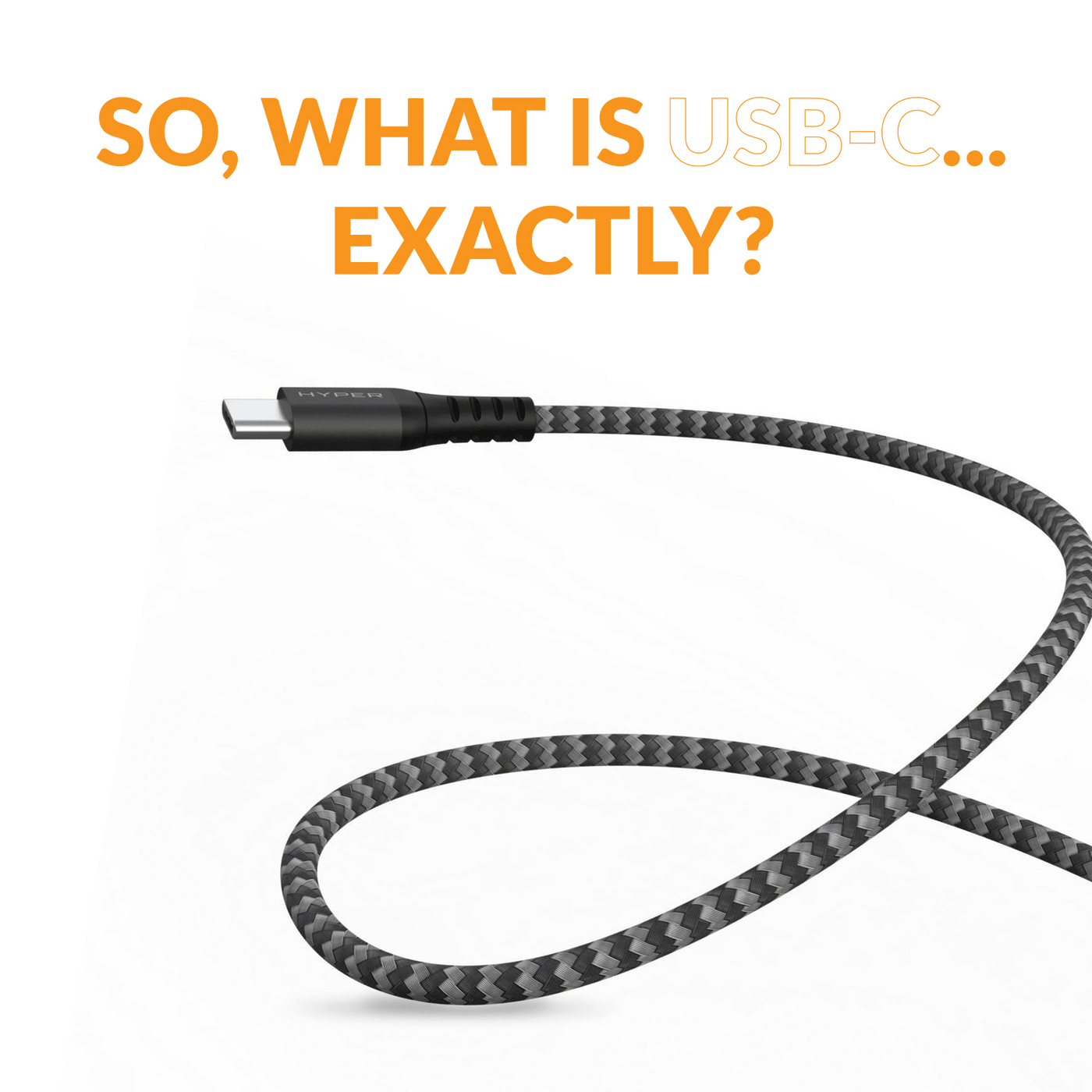What is USB-C?

Uncover Everything You Need to Know About USB-C
What is USB-C? You asked. We’re explaining it.
The world of USB-C can be an incredibly frustrating and confusing one, even for the most involved tech gurus or aficionados.
So, throughout the course of the blog, we’re going to distill and answer some of the most common questions and problems when it comes to trying to figure out which USB-C is best for you, and what you’ll need to ensure you’re properly connected and maxing out your tech as much as possible.
First off, let’s break down what USB-C is...
USB-C is an industry-standard connector that’s designed to transmit data and power in a single cable.
It was created by the USB-IF or the USB Implementers Forum, a group of companies that have developed and certified USB standards since they were in use. Within it, you’ll find very common tech product giants like Microsoft, HP and of course Apple.
So, why do you need USB-C?
Mainly, USB-C cables and port connections do three separate things, all incredibly important to anyone and everyone using technology these days. Compared to the older USB-A ports that were normally just used as a data port for connecting to hard drives, keyboards or mice, USB-C can do much more.
- They charge and power your devices
- They sync and transfer data
- They allow for audio and visual connection
Before you go buying a new desktop computer, laptop or tablet, make sure to double-check the specs, ‘cause like Hyper’s Head of Product says, “not all USB-C ports are created equal."
Why is USB-C so confusing?
We honestly don’t know, and that’s why we’re going to try to sum it up as clearly and succinctly as possible so you don’t need a PhD in tech talk to understand what’s going on.
Most of the USB-C ports you’ll come across are built on the USB 3.1 Gen 2 standard of data transfer. That means they deliver data at speeds of up to 10Gbps.
Now, that’s 2X faster than the older USB 3.0 and USB 3.1 Gen 1 editions. Those both have maximum transfer speeds up to 5Gbps.
Here’s where it gets a touch tricky. USB 3.2 is basically a remix of USB 3.1 just with a different name.
Why would they do that? We don’t have that answer for you. But, what we do have is a helpful chart below that shows the USB category, their max transfer speed, any other aliases, as well as their connection type for USB-A or USB-C.
USB 3.2 Gen 1
- Transfer Speed: 5Gbps
- Also Known As: USB 3.0 & USB 3.1 Gen 1
- Connection Type: USB-A & USB-C
USB 3.2 Gen 1x2
- Transfer Speed: 10Gbps
- Also Known As: Thankfully, no other names.
- Connection Type: USB-C
USB 3.2 Gen 2x1
- Transfer Speed: 10Gbps
- Also Known As: USB 3.1 Gen 2
- Connection Type: USB-A & USB-C
USB 3.2 Gen 2x2
- Transfer Speed: 20Gbps
- Also Known As: Thankfully, no other names.
- Connection Type: USB-C
How Thunderbolt™ 3 is redefining USB-C...
So, to understand how far we’ve come, we need to look back.
The original USB 1 would allow data transfer speeds up to 12Mbps. At the time, that was fast. But now, it would probably make you LOL.
We progress a bit to the USB 3.1. That had data transfer speeds up to 10Gbps. Okay, now we’re talking.
Then, we arrive to today. A USB-C port equipped with Thunderbolt™ 3 can get data transfer speeds up to 40Gbps!
That’s 4X faster than USB 3.1!
And more than 3,000X faster than the original USB 1 of 12Mbps!
Here’s where Thunderbolt™ 3 really sets itself apart. Not only does it add support for up to 40Gbps of output, but this one cable will be all you need to power your devices with up to 100 watts of power or for connecting to monitors or displays with 60Hz 4K HDMI or 30Hz 8K HDMI video quality.
This technology is huge for those of us who’ve fully embodied the mobile lifestyle, allowing many of our phones and tablets to directly connect with external displays whether we’re in the office or traveling on the road.
TLDR: Here’s everything you need to know about USB-C
- They charge and power your devices
- They sync and transfer data
- They allow for audio and visual connection
- Unlike USB-A, you can insert USB-C in any direction
- Check out our helpful chart above if you’re confused about USB-C
- Thunderbolt™ 3 is redefining what USB-C can do by transferring data faster, powering our devices faster, and allowing us to connect to monitors at 4K and 8K video quality
Explore our best-selling USB-C Docks, Hubs & Adapters:
https://www.hypershop.com/collections/usb-c-hubs-and-adapters

